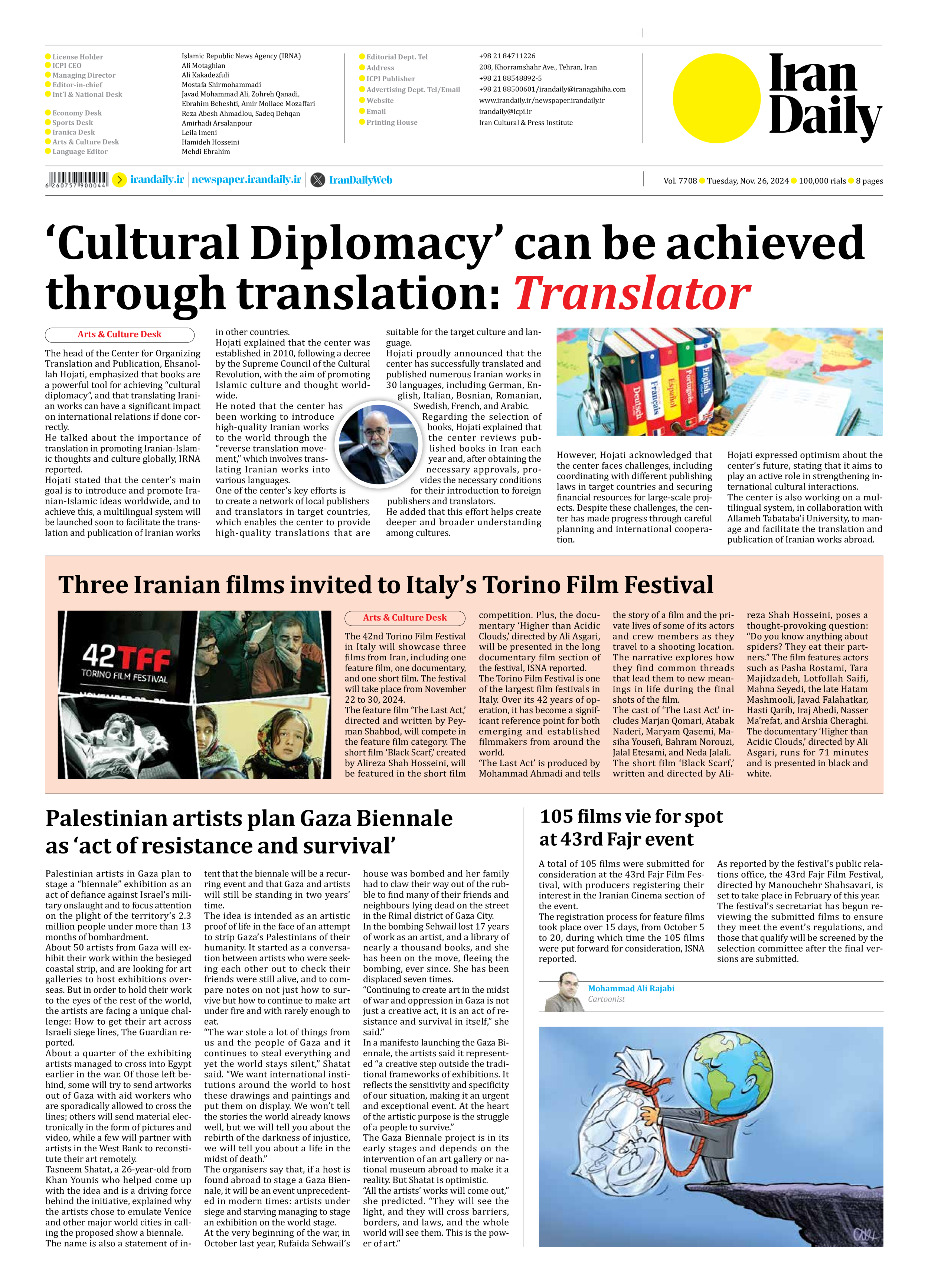
Copy in clipboard...
Palestinian artists plan Gaza Biennale as ‘act of resistance and survival’
About 50 artists from Gaza will exhibit their work within the besieged coastal strip, and are looking for art galleries to host exhibitions overseas. But in order to hold their work to the eyes of the rest of the world, the artists are facing a unique challenge: How to get their art across Israeli siege lines, The Guardian reported.
About a quarter of the exhibiting artists managed to cross into Egypt earlier in the war. Of those left behind, some will try to send artworks out of Gaza with aid workers who are sporadically allowed to cross the lines; others will send material electronically in the form of pictures and video, while a few will partner with artists in the West Bank to reconstitute their art remotely.
Tasneem Shatat, a 26-year-old from Khan Younis who helped come up with the idea and is a driving force behind the initiative, explained why the artists chose to emulate Venice and other major world cities in calling the proposed show a biennale.
The name is also a statement of intent that the biennale will be a recurring event and that Gaza and artists will still be standing in two years’ time.
The idea is intended as an artistic proof of life in the face of an attempt to strip Gaza’s Palestinians of their humanity. It started as a conversation between artists who were seeking each other out to check their friends were still alive, and to compare notes on not just how to survive but how to continue to make art under fire and with rarely enough to eat.
“The war stole a lot of things from us and the people of Gaza and it continues to steal everything and yet the world stays silent,” Shatat said. “We want international institutions around the world to host these drawings and paintings and put them on display. We won’t tell the stories the world already knows well, but we will tell you about the rebirth of the darkness of injustice, we will tell you about a life in the midst of death.”
The organisers say that, if a host is found abroad to stage a Gaza Biennale, it will be an event unprecedented in modern times: artists under siege and starving managing to stage an exhibition on the world stage.
At the very beginning of the war, in October last year, Rufaida Sehwail’s house was bombed and her family had to claw their way out of the rubble to find many of their friends and neighbours lying dead on the street in the Rimal district of Gaza City.
In the bombing Sehwail lost 17 years of work as an artist, and a library of nearly a thousand books, and she has been on the move, fleeing the bombing, ever since. She has been displaced seven times.
“Continuing to create art in the midst of war and oppression in Gaza is not just a creative act, it is an act of resistance and survival in itself,” she said.”
In a manifesto launching the Gaza Biennale, the artists said it represented “a creative step outside the traditional frameworks of exhibitions. It reflects the sensitivity and specificity of our situation, making it an urgent and exceptional event. At the heart of the artistic purpose is the struggle of a people to survive.”
The Gaza Biennale project is in its early stages and depends on the intervention of an art gallery or national museum abroad to make it a reality. But Shatat is optimistic.
“All the artists’ works will come out,” she predicted. “They will see the light, and they will cross barriers, borders, and laws, and the whole world will see them. This is the power of art.”







